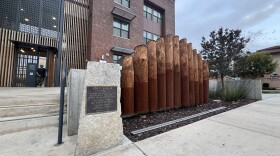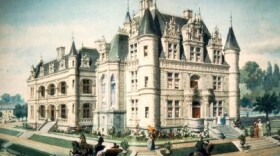You probably don’t know the name John Eastwood. But few valley residents have had a bigger impact on California history. Today on KVPR’s Central Valley Roots, the story of how one engineer’s vision helped shape the state we know today.
John Eastwood came to Fresno in 1885 to be the city’s first engineer, doing things like laying out streets and property lines. But he had bigger ideas. In 1891 he designed a flume to carry lumber from Shaver Lake to a sawmill in Clovis. And as he surveyed the Sierra, he realized the immense potential of hydroelectric power.
He developed his first hydro plant on the San Joaquin River in 1896. It was an engineering success but a commercial failure. Undaunted, Eastwood laid out a vision for something far bigger, at a place called Big Creek. By 1903 he developed a plan for a stairstep system of powerhouses, pipelines, tunnels and lakes - capturing the massive power of water descending the Sierra. All he needed was the financing to make it possible. Enter Henry Huntington. He had the money, and needed the electricity to run LA’s electric trains and to fuel his vision for Southern California’s growth.
Huntington’s company brought on Eastwood and got to work building his plan. By 1913, Big Creek’s first phase was complete, sending electricity 250 miles south. It was the largest system of its kind in the world. Along the way, Eastwood not only created many of the Sierra lakes we know today, he helped make the LA Basin thrive with abundant, cheap electricity. Huntington’s company would become Southern California Edison, and construction on the Big Creek project would continue with expansions until 1987. Big Creek has been called by historians the “hardest working water in the world.”







